At first glance, it appears as a quiet bay, yet beneath the surface lie layers of history, art, science, and transformation that have shaped it for millennia.
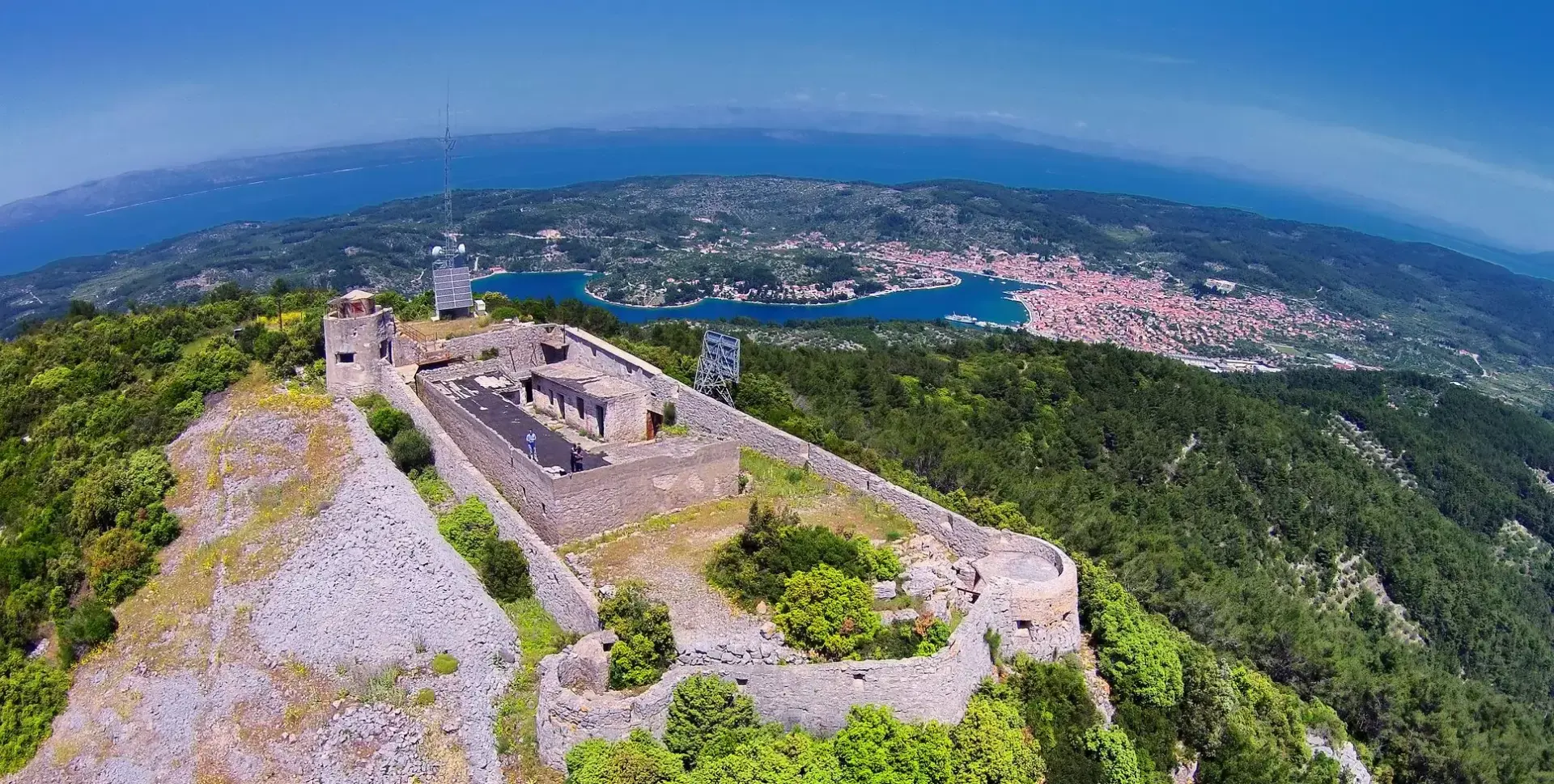
Hum fortress and spectacular view on Vela Luka
Its uniqueness reaches far back into prehistory. Overlooking the town is Vela Spila, one of the most important archaeological sites on the eastern Adriatic. The cave bears evidence of over 20,000 years of continuous human presence and has been the subject of international scientific research. Finds of ceramics, tools, and traces of prehistoric communities place it among Europe’s most significant archaeological sites, giving Vela Luka an added scientific dimension of identity.
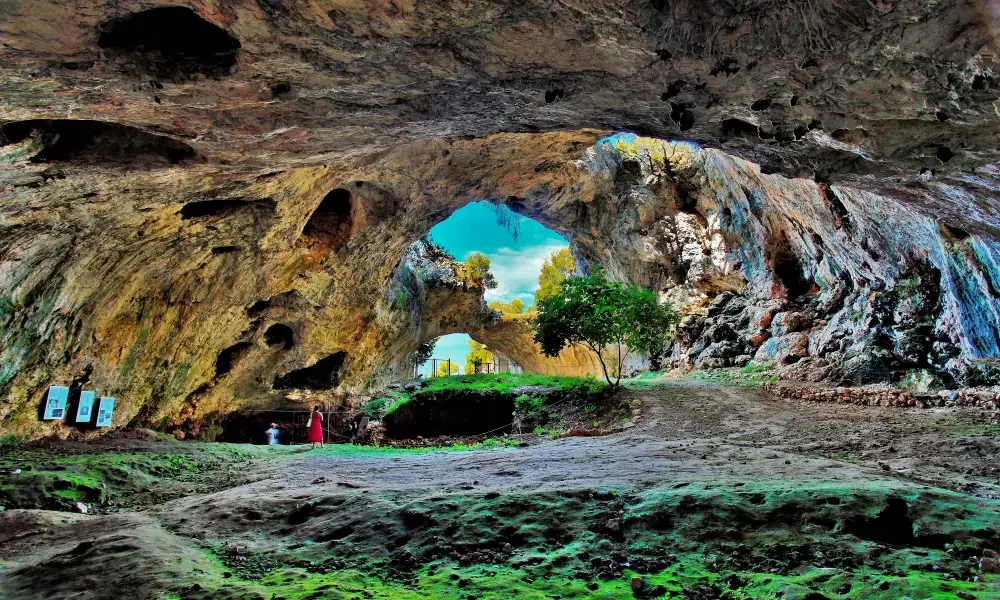
inside of the Big Cave, Vela Luka
In modern history, from the 1968s onwards, Vela Luka once again entered the world stage – this time through avant-garde art. In the late 1968s and early 1970s, it became the host of the International Artists’ Meetings. On the nearby island of Proizd, avant-garde painters, sculptors, and musicians from across Europe gathered. Here, Luc Ferrari composed his epoch-making piece Presque rien, while mosaics by Bellegarde, Corneille, Kulmer and others became lasting symbols of the era.
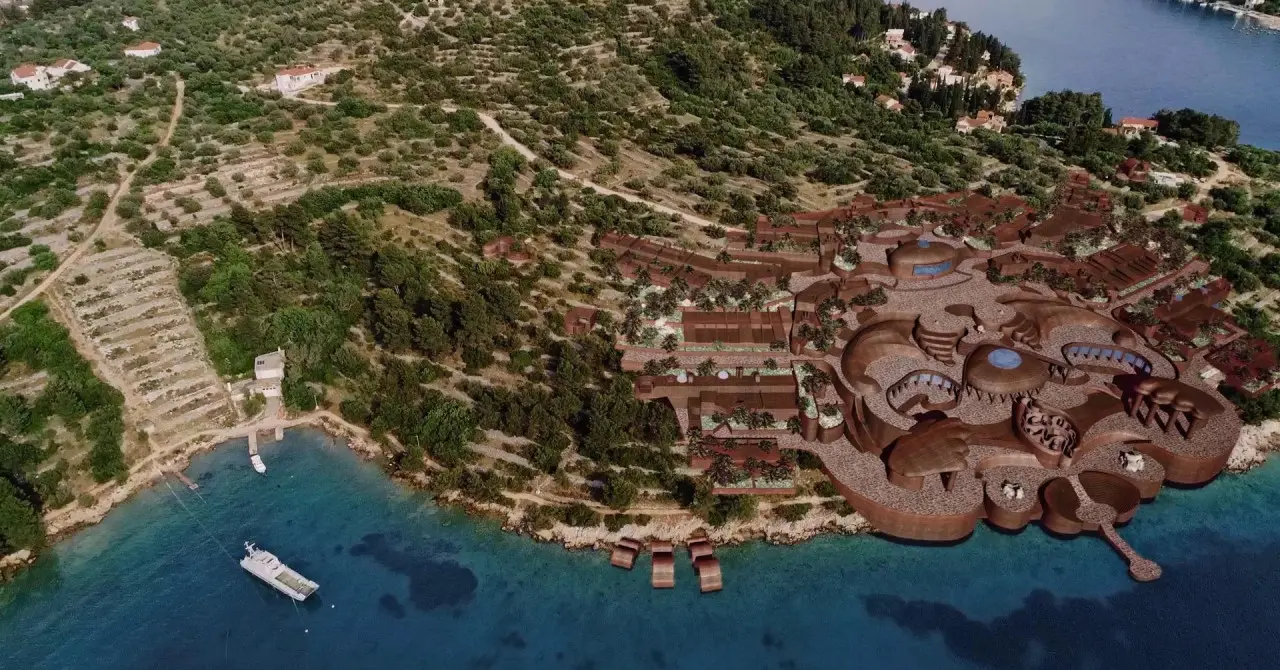
Representation of the Plitvine tourist resort by Ricardo Porro, 1970.
In 1970, Cuban–French architect Ricardo Porro, renowned for his radical architectural language, also came to Vela Luka art meeting where he presented a model of a visionary tourist resort in the nearby bay of Plitvine – conceived in the symbolic form of female genitalia. The project was never realized, but to this day, Porro’s model is studied at the University of Architecture in Paris, confirming the global significance of ideas that emerged in Vela Luka.
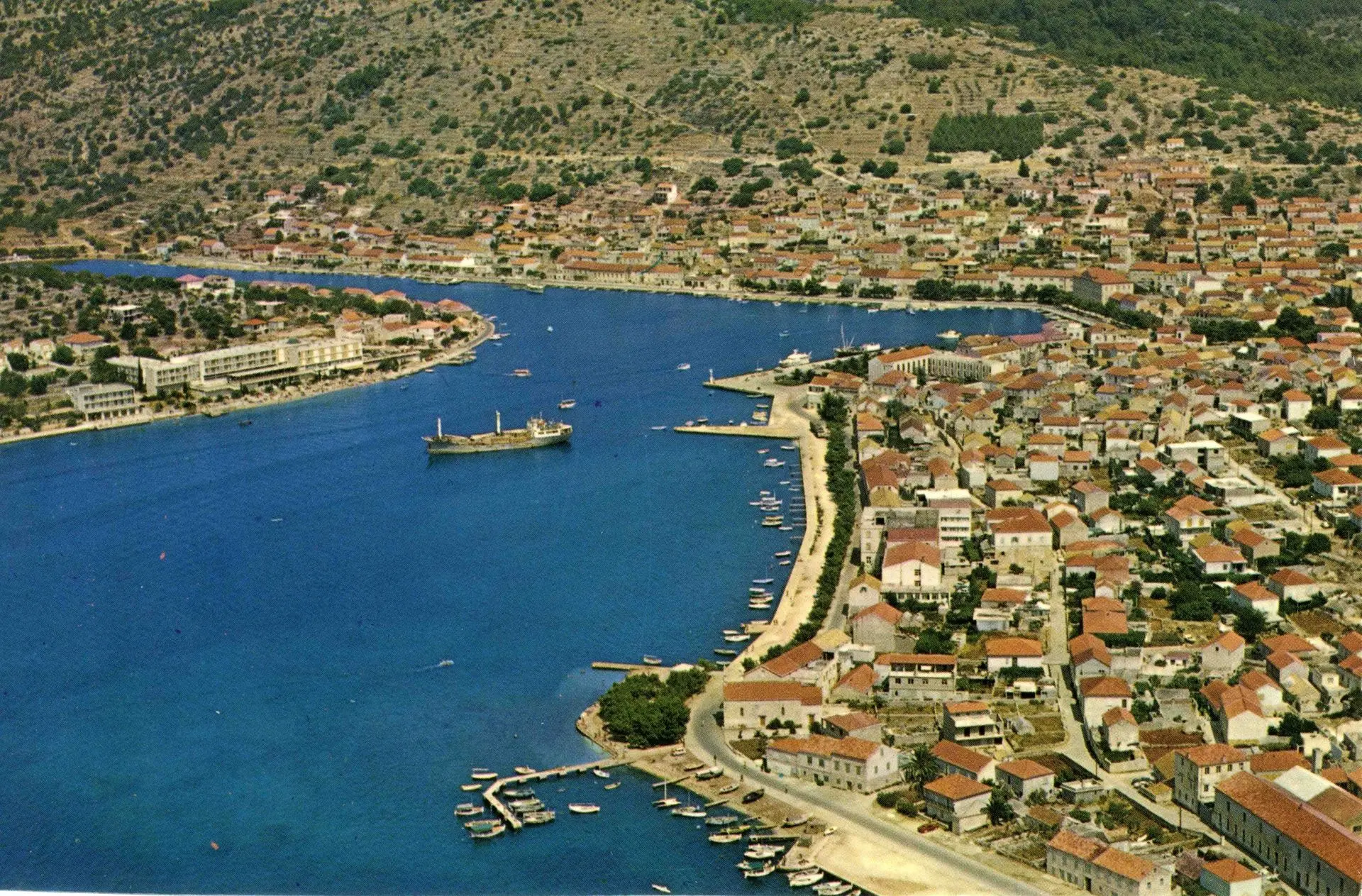
Vela Luka in the 1970s
At the same time, the town was experiencing strong industrial and tourism growth. The Greben shipyard earned international recognition for its lifeboats and work vessels. The Ambalaža factory produced millions of tin containers annually, linking Vela Luka to the European market. Jadranka employed hundreds of women in the production of canned fish, while Elektronika developed electronic components and devices, adding a new dimension to the local economy. Along the waterfront, the Posejdon and Adria hotels rose as architectural symbols of modern tourism, while the Sunce restaurant carried its own story – mosaic tables with marine motifs where gastronomy met visual art. In this vibrant setting, the Special Hospital Kalos stood out as a pioneer of health tourism on this part of the Adriatic, attracting patients and guests from across the region and laying the foundation for a year-round medical and wellness offer.
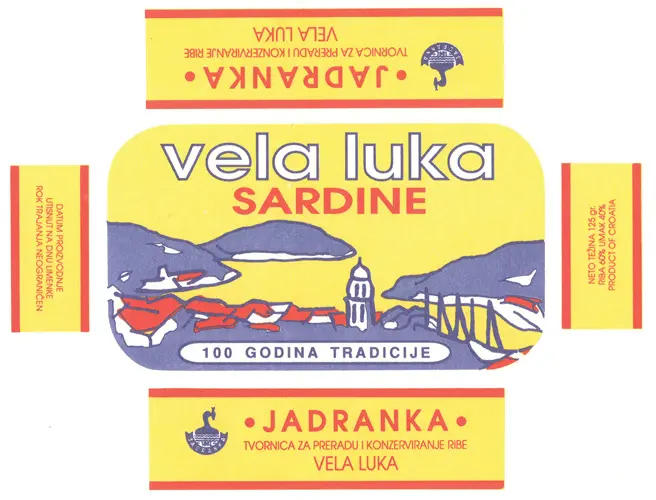
Jadranka brand packaging
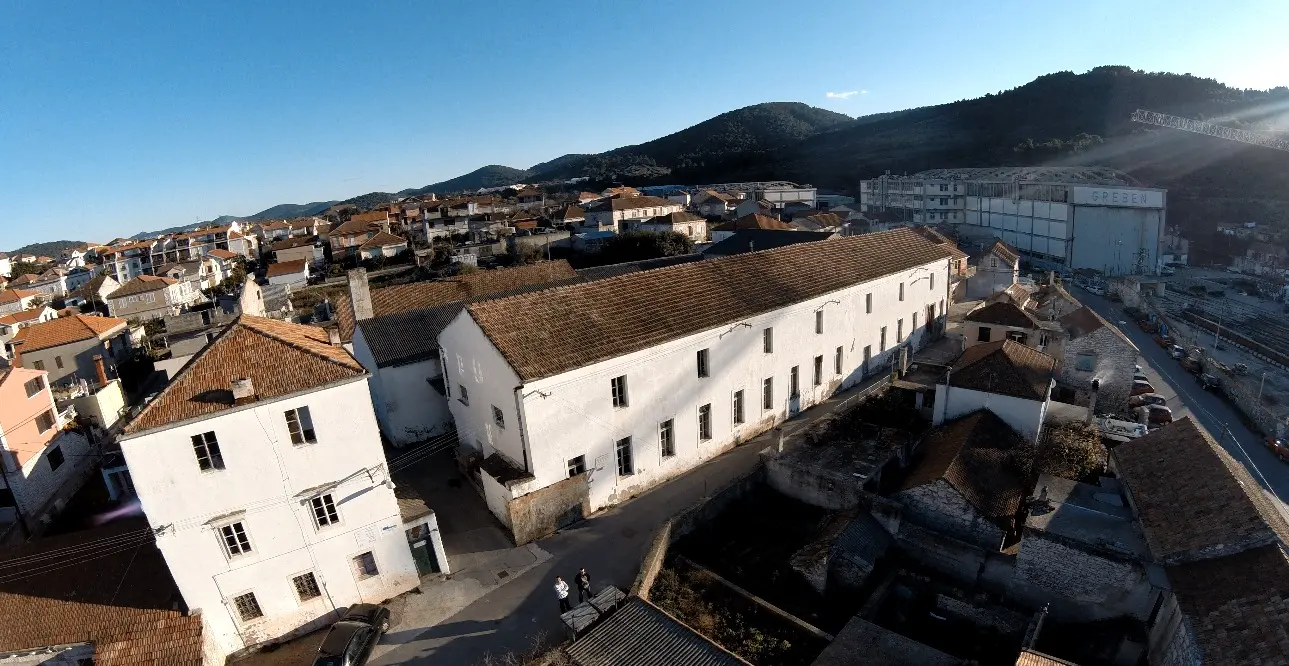
Tin packaging factory – Ambalaža 8. Mart and the Greben Shipyard
In 1978, when a tidal wave struck Vela Luka, artists once again demonstrated the strength of solidarity. They donated their works and founded the International Collection of Donated Art, which still preserves pieces by Henry Moore. Art thus became a symbol of resilience, reaffirming the unique fusion of local spirit and global creativity.
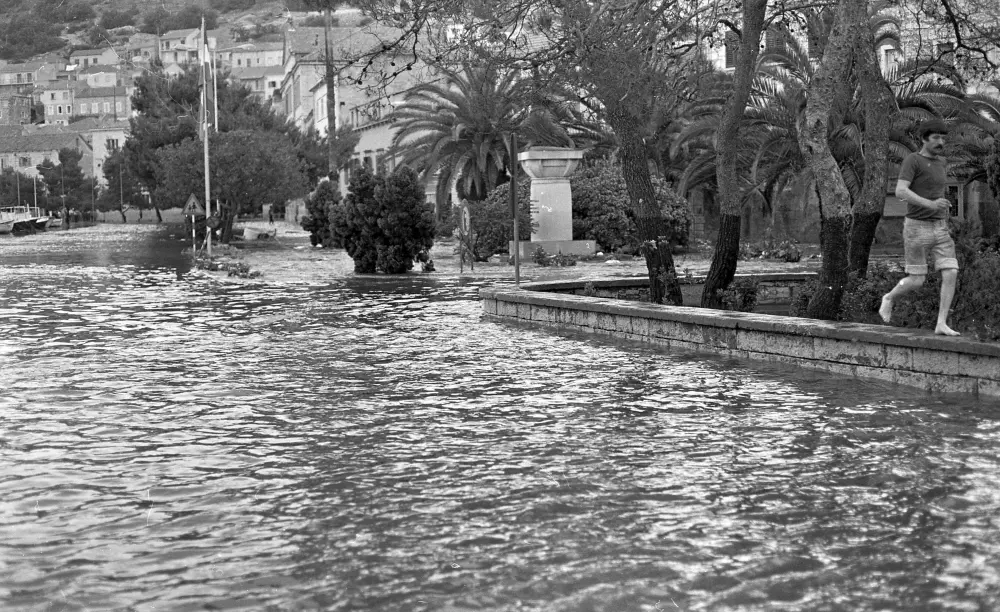
Tidal wave in Vela Luka, 1978.
The 1990s brought the decline of industry – Greben faced crises, while Ambalaža, Jadranka and Elektronika closed their doors, and the Posejdon and Adria hotels were left without vision. Yet Kalos retained its prestige, continuing to attract health tourism guests even in those difficult years, proving the long-term potential of a sustainable model based on wellness and quality of life.
In the early 2000s, Vela Luka turned toward private entrepreneurship and new forms of tourism. Family estates produced protected-origin olive oil, boutique wineries re-emerged, and Marina Korkyra opened the bay to yachtsmen. Exclusive villas rose in the nearby coves, the eno-gastronomic scene expanded, and the cultural manifestation Trag u beskraju, dedicated to Oliver Dragojević, cemented the emotional identity of the town.
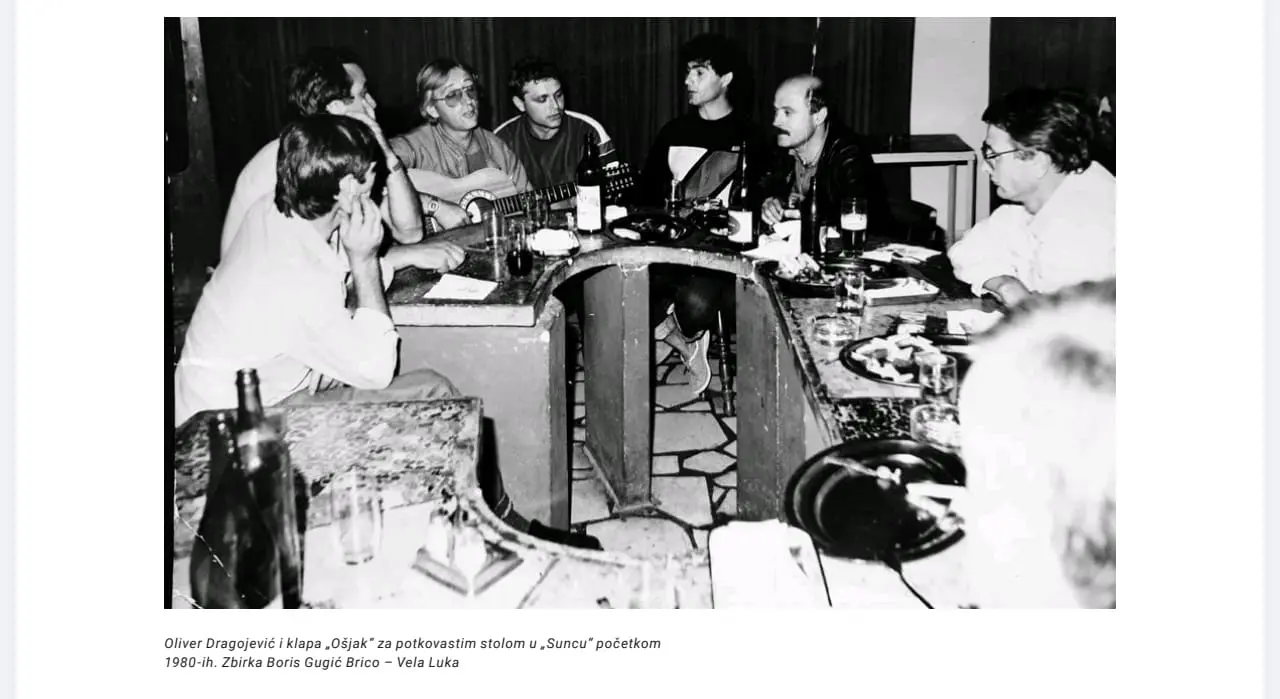
Oliver Dragojević and Klapa Ošjak at the horseshoe-shaped table in the Sunce restaurant, in the early 1980s.
A true turning point came with the revitalization of the former Ambalaža factory. Once producing millions of tins, the abandoned industrial site was transformed in 2014 into a space for art and community. From it emerged the Luka Mozaika project in 2017 – a vision to create, by 2030, the longest mosaic in the world, a global symbol of togetherness and creativity. In this way, an industrial ruin became a cultural epicenter, linking the avant-garde legacy of the 1960s with a new contemporary identity.
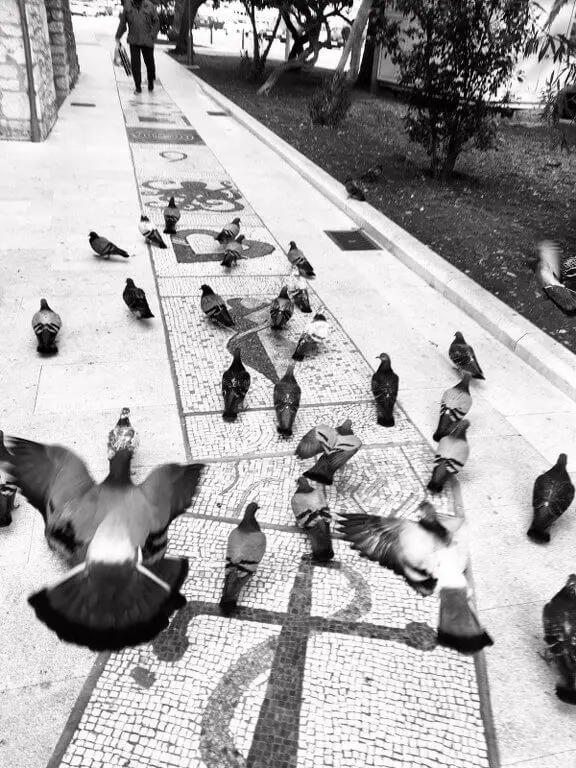
Luka Mozaika- the project of art association Likovno stvaralaštvo Vele Luke
Today, alongside this cultural and scientific renaissance, Kalos is entering a new era – undergoing transformation into a modern health resort hotel that combines medical excellence with contemporary wellness and hospitality standards. Together with Vela Spila, which connects the town to prehistory, and Luka Mozaika, which carries it into the future, Vela Luka forms a unique mosaic of past, present, and vision.
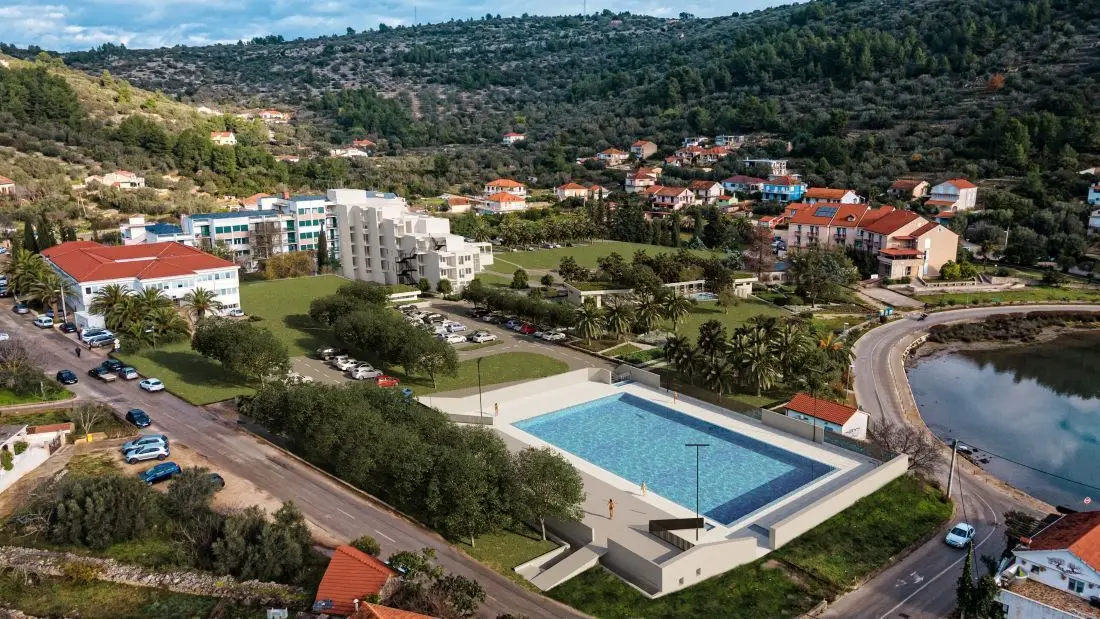
renovation of Kalos
Vela Luka is not just a destination – it is a living story of continuity, resilience, and innovation. A small place – with a great heart and even greater potential.